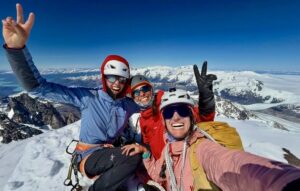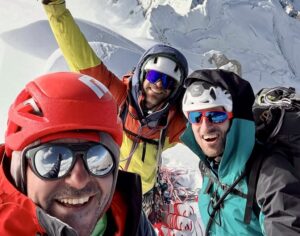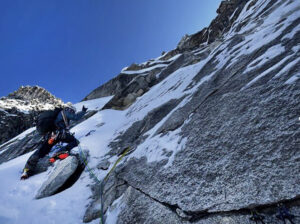On Dec. 1, Aconcagua National Park officially opens, and those going for the roof of South America will not feel lonely.
In fact, the park allowed in the first climbing teams on Nov. 20. Fernando Jadur of Acomara Aconcagua Expeditions told ExplorersWeb that their first client summited the peak on Nov. 25. The official climbing season goes from Dec. 1 (when the park rangers start working) to April 30.
Yet most climbers are expected to start reaching the Plaza de Mulas (Aconcagua Base Camp) just before Christmas. Summits will continue through March.
This year, the park offered a pre-booking system for permits — restricted to local operators — with discounts on bookings before July 31. So far, 860 climbers have applied for an Aconcagua trekking permit through this system.
Individual climbers must go through a much more complex process, involving two visits to the park office and payment for the permit in cash.

PLaza de Mulas, Aconcagua’s Base Camp. Photo: Aconcagua Expeditions
Fees vary
The fee varies from $600 to $1,500, depending on the route — the one up the Polacos Glacier from the Vacas Valley is slightly more expensive — and whether the climber is a member of a local operator’s expedition. Whether he/she is a citizen of a Latin American country also factors in. Check the fee list (in Spanish) here.
Overall, the expectations are as high for this season as they were during last year’s post-pandemic boom. As the tallest peak in the Americas and one of the Seven Summits, Aconcagua is very popular but doesn’t have traffic jams like Everest. It is a big mountain with no fixed ropes and plenty of space for camps.
The number of tents at higher camps and their placement are well controlled. Waste management is also better nowadays. The bigger companies now install portable toilets both at the base of the peak and at the higher camps.
What the mountain cannot escape is climate change. “The impact is huge,” Jadur said. “There is less and less snow each year, even in winter. But also, we are witnessing atypical climate events. For instance, right now there’s plenty of snow and it’s much colder than usual, to the point that getting water is a problem because the lakes are frozen.”

Nido de Condores Camp at 5,500m. Photo: Aconcagua Expeditions
Restrictions on foreign outfitters?
Jadur also commented on some rumors about restrictions for some foreign operators (from Nepal, in particular). He explained that there are no restrictions per se, but there will be stricter surveillance to make sure teams stick to the rules of the park and keep all necessary safety measures.
According to Jadur, in too many cases, climbers are rushed to the summit too quickly, without proper acclimatization. Last season, three died on the mountain: two of AMS, and a third one fell after ignoring his guide‘s advice. Jadur estimated that there are an average of 150 accidents on Aconcagua every season.






